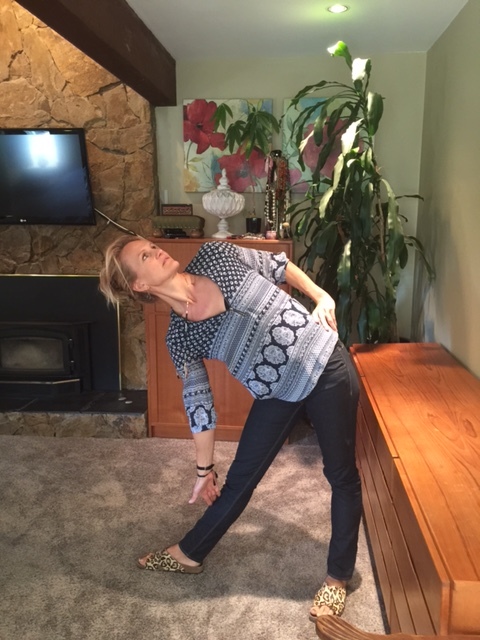You know what makes me crazy, grabbing a bag of frozen blueberries and having it say “no GMO”. Of course blueberries aren’t genetically modified—right? Actually, it’s hard to know. Especially now that the first Arctic Apple is hitting shelves, thank you Okanagan Specialty Foods, thank you BC Canada. It’s the first genetically modified food to be marketed to consumers, not farmers/growers. The first means there will be more.
Which begs the question, do you know what foods are genetically modified? Do you know what to avoid? There is a lot of confusion around this topic. But the one thing that’s not confusing is the fact that the vast majority of people do not want to eat it. Especially, we don’t want to ingest Round-Up, the deadly herbicide that accompanies these genetically modified food crops.
Allow me to clarify, as of right now there aren’t too many different genetically modified foods in our industrialized food supply. The problem is that of these few GM foods that exist, they end up in MOST of our processed/refined foods as corn oil, corn meal, soybean oil, canola oil, high fructose corn syrup, corn starch, soy flour, the list goes on, and the herbicide that accompanies these foods – Glyphosate – or Round Up is the trade name– you’ve all heard the term Round Up Ready – has tainted almost our entire food supply.
Don’t you think that if we had any inkling that GM foods were good for us, we’d be clamoring to buy and eat these wonders of modern bioengineering? Instead we’re running scared and companies are not willing to label their GM food products. They should be proud, instead they use millions of dollars to fight labeling, so they don’t have to tell us what is genetically modified, knowing full-well consumers would not buy their products—if we knew!
Now why is that? Nevermind that when it comes to testing genetically modified food, we are it! Meaning you, me, the human race, we are the guinea pigs. You want to know what GM foods do to health? Look around you. Talk to doctors. What do you think? Are we a healthy gang of North Americans on average? Chronic disease is on the rise: diabetes, cardiovascular, metabolic syndrome, cancer… But don’t mind that, we’re guinea pigs for all sorts of chemicals and lab made whatchamaceutical,s and have been for the good part of a century. No, the worst part of having genetically engineered food so integral to our food system is the herbicides and pesticides that accompany said food. They are part and parcel, one does not exist without the other. And what is most famous of these toxins? Glyphosate.
Glyphosate, aka Round-up, is a broad spectrum herbicide and crop desiccant, and it is now almost everywhere. Once limited to the land of the few GM crops it supports, it now runs through every water supply in North America and through the blood of many babies still in the womb. It is also newly ranked a ‘probable carcinogen’ by the WHO. Probable, pff! Look what it does to lab rats and mice. The studies are broad and immense: I call it pure poison.
How does it work? Scientists genetically engineer the corn with a bacteria that is resistant to glyphosate so that when the corn grows, it isn’t affected by the herbicide when sprayed. Normally glyphosate would kill any plant in its path, but the corn has been modified to be resistant, it’s safe, only the weeds are killed. Lovely! Spray away! And they do, because nature is smart, and super weeds crop up, they have to spray 2-3-4X as much glyphosate as they did in the past. And now, because it is so widely/liberally used around the globe, there is glyphosate residue in most of our food. And if it kills weeds and bugs, what about us?
Well, they tell us its safe, because the mechanism of “action it uses” is not present in animals. However, this pathway of “action” does exist in bacteria. Ever heard of the human gut biome? Scientists in the know call it our second brain and it’s 100% made of bacteria! In fact bacteria outnumber the cells in our bodies by 10:1. And glyphosate residue finds its way into these microbial bodies and into our teeny bacterial residents—particularly the beneficial ones, which get screwed, allowing pathogens, and their toxins, to takeover. So glyphosate and GM food is now linked to almost every chronic disease there is, from cancer to Alzheimer’s to obesity. We could spend hours pouring over studies, instead go to 40girlsguide.com for links and info. Worse, the Monsanto glyphosate patent has now expired and China has created there own generic version of Round-up, more powerful then the original. Great.
So let’s get to it, my current Top 5 list of GM foods for you to avoid, starting now:
1) Corn. Surprise! You’d have to be living under a rock to not know that Dent Corn is genetically modified, pretty much across the globe. Dent corn is also called yellow corn or field corn, it’s very high in starch and doesn’t taste sweet like corn on the cob. It’s used for secondary products like animal feed, corn meal flour, corn chips, taco chips, plastics, high fructose corn syrup and so many processed foods and drinks. Read the label! Popcorn, however, is not GM, none of it. Pfew! And Sweet Corn, if in Canada, is not. However, in some parts of the US, sweet corn is genetically modified. So be sure to ask for organic or non-GMO.
2) Canola Oil, made famously in Canada from rape seed, which they renamed Canada-oil or Canola oil, is mostly genetically modified, unless it says otherwise. There have been some nasty law-suits where good farmers went against the grain, or seed, attempting to avoid the Monsanto poison-wagon, who paid dearly for it. Google Percy Schmeiser. The message from Monsanto? Go au naturel and get crushed. The message from Percy, screw you Monsanto. So yes, you can find organic or non GMO canola oil, thanks to folks like Percy. But like most vegetable oils, it is usually heavily dreadfully refined, and hard on your body—think chronic inflammation, arthritis and the like.
3) Sugar beet, hearty thing grown in various parts of Canada and the US, mostly genetically modified. Cane sugar is not. But I don’t recommend either. See my sugar episode.
4) Soy, another big surprise, yes the mono-crop famous for decimating the Brazilian rain forest amongst other large swaths of land. More than 90% of soy grown in the US is GM. You can find organic, but I wouldn’t bother, it contains phytoestrogens. When these are combined with the estrogenic effects of glyphosate (and other xenoestrogen pollutants), it’s proven pretty deadly in lab animals and linked to massive mammary tumors, amongst other goodies. See why maybe we’re having trouble beating breast cancer? We don’t need more chemo, we need to prevent this disaster by avoiding GM soy!
5) Factory milk, cheese—dairy, beef, chicken, and so on are given feed made from genetically modified Round-up-ready corn. That counts since these toxins concentrate to dangerous levels in the tissues of animals.
Them’s the biggies, here are the rest: papaya, some crook-neck squash, cotton!! and alfalfa. New to the GM pool are farmed salmon (Frankenfish), and the Canadian Arctic Apple. Thank you very much Okanagan Specialty Foods for thinking people can’t handle some natural browning on their apple slices. Perfect fruit? Screw it. I’ll take local home grown imperfections and all. I can’t finish this list without mentioning wheat. Wheat is not genetically modified, it is—however—very much hybridized, and sprayed liberally with glyphosate as a desiccator, which keeps it from getting moist and moldy and buggy in the silo. Conventional wheat is full of pesticide residue and if turned into flour anything: bread, pasta – it’s stripped of any goodness, vitamins, oils and so on. You’re left with one of the most common allergens on the planet: gluten. Hello Wheat Belly!
Good news? There aren’t too many GM foods as of right now. Bad news? They’re working hard to make more at the consumer level—that means more non-browning perfection at the grocery store and a whole lot more waste! Further the few genetically modified crops that are out there, like soy and corn, are in almost all refined and processed foods. Just look. It’s everywhere. Soy, cottonseed, corn oils, flours, starches, this and that. If your processed food label does not say GMO-Free, assume the worst, GM and laden with glyphosate.
I’m not a hater, GM food was born of the best of intentions. They called it the Green Revolution. But the reality is that it is not sustainable because it’s poisoning the land, sea and air –farmers can’t save seeds as they’ve done for the millennia and they’re getting sick spraying the hell out of their crops! The earth has been poisoned as have its inhabitants and we must work to reverse it.
How? Buy organic and grow your own. Seek out local farmer’s markets, get to know the producers, and buy from them only, from family farms! Don’t eat foods out of season. In cold climates, eat the vegetables and fruits that survive in cellars in the winter like squash, pumpkins, carrots, beans, potatoes, apples and various canned/jarred foods. Most importantly—Vote with your dollars. It is the only way to have a real impact—biotech firms are far too large and rich to take on dollar for dollar in the courts and via government. Shop smart! Spend the extra money now, and save on doctor’s visits later. You are worth it!
xx Shannon
https://www.nongmoproject.org/gmo-facts/
http://articles.mercola.com/sites/articles/archive/2013/08/06/genetic-modification.aspx
http://www.wanttoknow.info/gmoinyourfood











